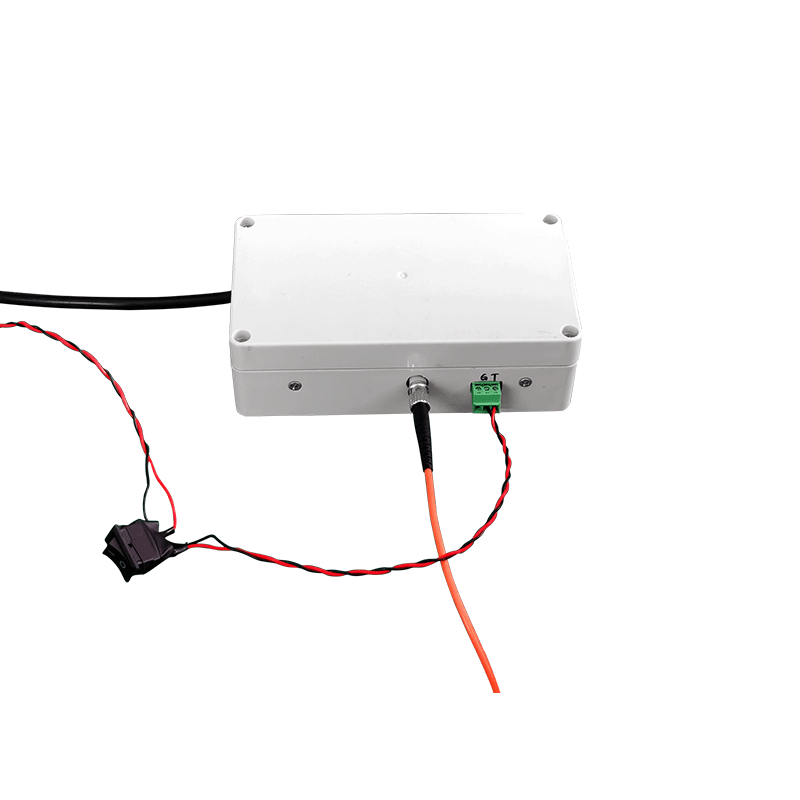Application of High-Voltage Modular Power Supplies in Power Systems
In the complex operational architecture of modern power systems, high-voltage modular power supplies (HV-MPS) serve as core units for energy conversion and distribution, playing a critical role in providing stable high-voltage excitation for key equipment. The deep integration of their modular design concept with high-voltage power supply technology effectively meets the power system's requirements for high reliability, adaptability, and intelligent operation and maintenance. This article analyzes the technical characteristics, engineering value, and development trends of HV-MPS from typical application scenarios in power systems.
1. Core Power Supply Support for Substation Automation Systems
As the hub of power systems, substations rely on high-precision high-voltage power supplies for the reliable operation of relay protection, monitoring devices, and high-voltage switchgear. HV-MPS offer dual technical advantages in this scenario:
1. High-Reliability Redundant Design: For substation secondary equipment (such as intelligent terminals and merging units), the power supply adopts an N+1 redundant architecture. In the event of a single-module failure, redundant units automatically take over, ensuring that the control power of substations at 110kV and above can continue to supply power for 2 hours via energy storage capacitors even after a utility power outage, meeting the strict reliability requirements of anti-accident measures.
2. Wide-Range Voltage Adaptation: Adapting to the complex electromagnetic environment of substations, the power supply supports a wide input range of 85-265V AC and operates in a wide temperature range of -40℃ to +75℃. The built-in EMC filter circuit suppresses conducted interference below the CISPR 32 Class A standard, avoiding signal coupling interference from high-voltage pulses to relay protection devices.
2. Distributed Power Supply for Transmission Line Condition Monitoring
In cross-regional transmission networks, the power supply problem for distributed monitoring devices (such as insulator online monitors and conductor temperature sensors) is solved by HV-MPS:
High-Voltage Isolation and Energy Harvesting: For transmission lines above 10kV, the power supply uses inductive coupling to extract energy from the transmission conductor and converts it into 12V/24V DC power through a high-voltage isolation module (isolation withstand voltage ≥4kV DC), addressing the issues of high maintenance costs for traditional battery power and environmental dependence of solar power.
Low Power Consumption and Self-Starting Capability: In low-load conditions where the conductor current is below 50A, the power supply enters a sleep mode with a standby power consumption of <0.1W. When the current rises, it achieves millisecond-level self-starting through a built-in wake-up circuit, ensuring continuous monitoring data. An application example in a UHV line shows that this solution reduces equipment dropout rate from 15% in traditional schemes to below 2%.
3. Precise Voltage Regulation for Power Electronic Converters
In power electronic devices such as flexible DC transmission (VSC-HVDC) and static var compensators (SVC), HV-MPS provide driving voltages for power devices like IGBTs and thyristors:
1. High-Precision Synchronous Triggering: For series-connected power modules (such as modular multilevel converters, MMC), the power supply uses fiber-optic synchronization technology to achieve a trigger pulse synchronization accuracy of ±1ns. With a voltage output accuracy of ±0.5%, it ensures balanced capacitor voltages in each sub-module, reducing the total harmonic distortion (THD) of the converter to <3%.
2. Dynamic Response Optimization: Facing the fast switching process of power electronic devices (switching frequency 1-20kHz), the power supply shortens the inductor response time through magnetic integration technology, controlling the load step response recovery time within 5μs and effectively suppressing voltage overshoot (≤5% of rated voltage) to improve the device's transient stability.
4. Compatibility Design for New Energy Grid Integration
In scenarios such as wind and photovoltaic energy access, HV-MPS need to adapt to the special requirements of distributed generation:
Wide-Bandgap Semiconductor Adaptation: To match the high-voltage driving requirements of new power devices like SiC and GaN, the power supply extends the output voltage range to ±200V with a rise time <10ns, meeting the driving precision needs of high-frequency converters (switching frequency >100kHz) and helping increase the efficiency of new energy inverters to over 98%.
Grid Fault Ride-Through Support: During grid voltage dips (e.g., down to 0.2pu), the power supply maintains 100ms of uninterrupted power through a supercapacitor energy storage module, ensuring the normal execution of the photovoltaic inverter's fault ride-through function, in compliance with the low-voltage ride-through technical specifications of GB/T 19964 for new energy equipment.
5. Technical Challenges and Development Trends
HV-MPS currently face three major technical challenges in power system applications:
1. High-Voltage Insulation Optimization: With the popularization of UHV transmission (1000kV and above), nano-composite insulating materials (such as SiO₂/epoxy resin) are required to increase the module volume resistivity to over 10¹⁴Ω·cm, while three-dimensional stacked packaging technology reduces creepage distance.
2. Energy Efficiency and Thermal Management: In high-power scenarios (single-module power >5kW), combining LLC resonant topology with liquid cooling increases power supply efficiency to over 94% and controls the junction temperature below 125℃ to meet the 20-year design life requirement.
3. Intelligent Operation and Maintenance: Integrating digital twin technology to real-time monitor internal partial discharge (resolution ≤5pC) and insulation resistance changes, and using edge computing for remaining useful life prediction, transforming periodic maintenance into condition-based maintenance and reducing operation and maintenance costs by over 30%.
In the future, as the new power system demands greater flexibility and reliability, HV-MPS will evolve toward high-density integration (power density >10kW/L), full-condition adaptability (-55℃ to +125℃ wide-temperature operation), and green design (lead-free, electrolytic capacitor-free), becoming a key enabling technology for supporting the construction of the energy internet.




















